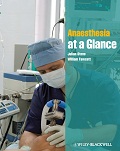A 73-year-old man underwent a total knee replacement 8 hours previously and the ward send out an urgent request for you to attend as he has collapsed. The procedure was uncomplicated and he had previously been sitting on the ward comfortably. He was receiving an epidural infusion for pain control.
-
1. What might be the causes of his collapse?
Show Answer
Correct answer: Collapse implies loss of consciousness and is usually from a cardiorespiratory or neurological cause:
-
cardiovascular 4Hs and 4Ts:
- hypoxia, hypotension, hypo/ hyperkalaemia/ hypothermia;
- tension pneumothorax, cardiac tamponade, toxins, thrombosis;
- neurological CVA/TIA.
In addition, there may be specific causes such as the epidural (high block or local anaesthetic toxicity).
-
2. What would your immediate assessment be?
Show Answer
Correct answer: Along conventional ALS guidelines:
A Airway
B Breathing
C Circulation
D AVPU and pupillary size
E Exposure of patient.
-
3. What would be your initial management?
Show Answer
Correct answer:
Along conventional ALS guidelines:
-
maintain airway/ Guedel airway/ intubate trachea (if respirations inadequate/ absent);
-
support circulation – fluids/ inotropes/ CPR according to status.
-
4. What investigations would you require
Show Answer
Correct answer:
-
glucose
-
arterial blood gas analysis
-
full blood count
-
ECG.
-
5. His ECG shows rapid atrial fibrillation. How would you treat this?
Show Answer
Correct answer:
If this is thought to be the cause of collapse and compromising blood pressure, then DV cardioversion. Less urgently, use digoxin or amiodarone (the latter can cause hypotension).
-
6. How might AF have caused this problem?
Show Answer
Correct answer:
From hypotension or from a cerebral embolus.
-
7. If the patient’s epidural catheter was inadvertently either in CSF (resulting in a total spinal) or in an epidural vein (resulting in local anaesthetic toxicity) how might you manage the patient?
Show Answer
Correct answer:
Total spinal: intubate, ventilate, fluids, vasopressors until LA has worn off.
Local anaesthetic toxicity: give 20% intralipid 1.5 mL/kg over 1 minute and then 0.25 mL/kg/min over 20 minutes.
-
8. Where should the patient be managed overnight?
Show Answer
Correct answer:
Intensive care.

